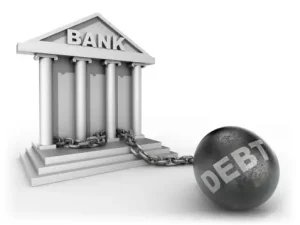When you have a bad credit score, it can feel like there are no options for financial assistance. Fortunately, there are still several types of loans available to those with bad credit in the USA. These loans may have higher interest rates and stricter terms than loans available to those with good credit, but they can still provide much-needed financial relief. Here are some types of loans you can get with bad credit in the USA.
-
Personal loans
Personal loans are a popular option for those with bad credit because they are unsecured, meaning they do not require collateral. Personal loans can be used for many purposes, such as debt consolidation, home improvements, or unexpected expenses. However, because personal loans are unsecured, they typically have higher interest rates than secured loans.
When applying for a personal loan with bad credit, be prepared to provide proof of income and employment. You may also need to provide additional documentation, such as bank statements or tax returns. It’s important to shop around and compare offers from multiple lenders to find the best rates and terms.
-
Payday loans
Payday loans, which are designed to be short-term loans, are usually expected to be repaid on the borrower’s next payday. These loans are easy to obtain, as they typically do not require a credit check. However, payday loans come with very high-interest rates and fees, making them a very expensive option.
In addition, payday loans can trap borrowers in a cycle of debt. If you are unable to pay back the loan on your next payday, you may be forced to roll over the loan, incurring additional fees and interest. This can quickly spiral out of control, leaving you in even more debt than before.
If you must take out a payday loan, be sure to read the terms and conditions carefully and only borrow what you can afford to repay. It’s also a good idea to consider other options before resorting to a payday loan, such as borrowing from family or friends, or seeking financial assistance from a non-profit organization.
-
Title loans
Title loans are secured loans that require collateral, typically in the form of a car or other vehicle. When you take out a title loan, you hand over the title to your vehicle in exchange for cash. If you are unable to repay the loan, the lender can seize your vehicle to recoup their losses.
Title loans can be a tempting option for those with bad credit, as they do not require a credit check. However, title loans come with very high-interest rates and fees, making them a very expensive option. In addition, if you are unable to repay the loan, you risk losing your vehicle, which can have serious consequences.
If you must take out a title loan, be sure to read the terms and conditions carefully and only borrow what you can afford to repay. It’s also a good idea to consider other options before resorting to a title loan, such as borrowing from family or friends, or seeking financial assistance from a non-profit organization.
-
Secured loans
Secured loans are loans that require collateral, such as a car or home. Because these loans are secured, they typically come with lower interest rates and better terms than unsecured loans. However, if you are unable to repay the loan, the lender can seize your collateral to recoup their losses.
When applying for a secured loan with bad credit, be prepared to provide proof of income and employment, as well as documentation related to your collateral. It’s important to shop around and compare offers from multiple lenders to find the best rates and terms.
-
Co-signer loans
A co-signer loan is a loan that requires a co-signer, typically someone with good credit, to guarantee the loan. This means that if you are unable to repay the loan, the co-signer is responsible for repaying it. Co-signer loans can be used for a variety of purposes, such as buying a car, financing a home, or paying for education expenses.
The presence of a co-signer reduces the risk to the lender, which can make it easier for those with bad credit to obtain a loan. However, it’s important to remember that if you default on the loan, the co-signer is legally responsible for repaying it. This can strain relationships and cause financial difficulties for both parties.
What Are Bad Credit Loans?
Bad credit loans are loans designed specifically for individuals with poor credit scores or limited credit history. These loans are intended to provide financial assistance to those who have difficulty obtaining loans from traditional lenders, such as banks or credit unions.
Lenders that offer bad credit loans typically have less strict eligibility requirements than traditional lenders. While traditional lenders may require a minimum credit score, steady employment history, and a clean credit report, bad credit lenders may be more lenient in their requirements.
Bad credit loans can come in many forms, including personal loans, installment loans, payday loans, and title loans. Each type of loan has its own unique features and eligibility requirements, so it’s important to carefully consider your options before applying.
While bad credit loans can provide much-needed financial assistance, it’s important to carefully consider the terms and conditions before applying. These loans can come with high-interest rates, fees, and strict repayment terms, which can lead to further financial difficulties if not managed responsibly. It’s important to have a plan in place for repaying the loan and to only borrow what you can afford to repay.
Causes of a Bad Credit Rating
A credit rating is a numerical value that represents a borrower’s creditworthiness. A good credit rating means that a borrower is likely to pay back their debts on time, while a bad credit rating indicates a higher risk of default. There are several factors that can contribute to a bad credit rating, including:
- Late or missed payments: One of the most common causes of a bad credit rating is late or missed payments on loans or credit cards. When a borrower fails to make their payments on time, it can damage their credit score.
- High credit card balances: Carrying high balances on credit cards can also negatively impact a borrower’s credit rating. Credit utilization, or the amount of available credit a borrower uses, is an important factor in determining credit scores. High credit card balances indicate a higher risk of default, which can lower a borrower’s credit rating.
- Collections and charge-offs: When a borrower fails to repay a debt, the lender may send the account to collections or charge off the debt. This can have a significant negative impact on a borrower’s credit rating, as it indicates a history of non-payment.
- Bankruptcy: Filing for bankruptcy can have a long-lasting negative impact on a borrower’s credit rating. Bankruptcy can stay on a borrower’s credit report for up to 10 years, and can make it difficult to obtain credit or loans in the future.
- Foreclosure: Foreclosure is the process of a lender seizing a borrower’s property due to a failure to make mortgage payments. Foreclosure can have a significant negative impact on a borrower’s credit rating, as it indicates a history of default.
- Identity theft: Identity theft can also contribute to a bad credit rating. When someone steals a borrower’s identity and opens fraudulent accounts or makes unauthorized purchases, it can damage the borrower’s credit score.
It’s important to monitor your credit score regularly and take steps to improve it if it’s low. This can include paying bills on time, paying down credit card balances, and disputing any errors on your credit report. With time and effort, it’s possible to rebuild a bad credit rating and improve your financial standing.
How to Get Short-term Bad Credit Loan
If you have bad credit and need access to quick cash, a short-term bad credit loan may be a viable option. These loans are designed to help people with poor credit get the funds they need for unexpected expenses or emergencies. Here are some steps to take when trying to get a short-term bad credit loan:
- Know your credit score: Before applying for a loan, it’s important to know your credit score. You can receive a free credit report from the three major credit bureaus once a year. Knowing your credit score can help you determine if you’re likely to qualify for a loan and what interest rates you might expect.
- Explore your options: There are many lenders that specialize in bad credit loans, including online lenders and payday lenders. It’s important to do your research and compare lenders to find the best rates and terms.
- Consider collateral: If you have collateral, such as a car or a savings account, you may be able to get a secured loan. Secured loans are often easier to obtain than unsecured loans and may have lower interest rates.
- Provide documentation: When applying for a loan, you will typically need to provide documentation, such as pay stubs or bank statements, to prove your income and employment status.
- Get a co-signer: If you have a friend or family member with good credit, you may be able to get a loan with a co-signer. A co-signer is someone who agrees to repay the loan if you default. Having a co-signer can improve your chances of getting approved and may help you get a lower interest rate.
- Be prepared to pay higher interest rates: If you have bad credit, you will likely have to pay higher interest rates than someone with good credit. This is because lenders view bad credit borrowers as a higher risk.
- Repay the loan on time: To avoid further damaging your credit score, it’s important to repay the loan on time. Late or missed payments can result in additional fees and damage your credit score even further.
Getting a short-term bad credit loan can be challenging, but it’s not impossible. By doing your research and being prepared, you can increase your chances of getting approved and getting the funds you need. However, it’s important to carefully consider your options and the terms of the loan before making a decision.



